A bone dry bilge is my dream and here is what I have learned:
1). Bilge pump cycles on and off.
Few things are less comforting during a night passage than having the bilge pump turn on and off. Up come the floor boards with no conclusive evidence of imminent sinking. The only real cure is to make the water collection pit bigger. Here is my logic. The pump fails to send the last bit of water overboard. This last bit is the amount from the pump to the loop of the loop. Let’s say that is a liter. The liter then returns to the tiny bilge box and becomes a centimeter of water. This volume of water confuses the trigger and restarts the pumping process. Add a bit of a rolly boat and you have an endless loop. Now imagine a much bigger box and the liter of water is only a film. I am not ready to start cutting but this would be a great solution. Newer boats have larger boxes. Lucky ducks.
2. Transmission oil cooler (Volvo feature)
The first photo is of a broken plug, a spent plug and a new plug. After two happy years, my plugs were dead. Too many marinas? The Volvo engines do not have zincs. So parts can get gobbled. My plugs on both engines were leaking slowly; this could have resulted in a dramatic fail, as it would open a fairly large hole in the raw water loop.
- oil cooler plugs
- new oil cooler
- new plug installed
I am considering installing a plug that has a screw-in zinc. I found one in St Lucia, but want to email Volvo first.
While on the topic of oil coolers. Mine were both cast poorly and I will swap them out at some point. The output hole is blocked partially from original production. Volvo you are lazy.
3. Hot heater overflow water valves.
After giving up on the Quick Water Heater support desk, I followed the advice of the
forum (thanks Paul and Jeff). My pressure relief valves are now putting water back into the tank. I am very happy about this as we were losing quite a lot of fresh water to the bilge. I still need to track down weather our hot water heaters have zincs. The photos show the install. 1/4 inch hose most of the way and then a barb to convert to 15mm NPT and then joined at the water maker tank inlet hose. Not too tough, but it makes me wonder why I have hot water heaters. If you need them, you are too far north. Okay, clean dishes are nice. Most of my bilge water was from the hot water heater but I was still on patrol.
4. Cam screw on raw water pump.
Dissimilar metals are hell. I found a small leak from the raw water pump. It was not from the face plate or the hose, but from a screw on the
side of the pump that holds the cam. This screw had been eaten by stray electrons in only 9 months. Turns out my new pumps that were all covered in sexy green Volvo paint hid the fact that Volvo did
not use a brass screw. It was eaten and started to leak. The screw broke off in the cam so I used the perfectly good cam from my old pump. Brass screw spares are on order. By the way Volvo will no longer sell the cam separately. I assume it was hurting pump sales?
You can see I have the speed seals as impeller covers. Still like them. As a safety measure, we cut off an inch of the hose attached to the feeder side of the pump to have a cleaner fit.
5. Clean the shaft
Underneath the elephant nose (aka Tides Marine Shaft Seal) is a home to hearty sea creatures. With the bilge pump on, we removed the black ring and pushed back the baffle revealing some barnacles. Wet sanded them off and new shaft ready for another 1000 hours of dry bilges. Also moved the entire unit forward a centimeter to have the lip seal touch at a new point of the shaft. Our shaft alignment is good, so the seals are in good shape. The second black ring is our back-up seal that allows for changing at sea with shaft removal.
6. Leaky head solenoid.
The solenoid has a small anti siphon loop that was leaking. Swapped it out for new and no more drips.
7. Years ago we had a leaky sump from the shower, but this has been fixed.
As Two Fish is a catamaran, we got to do most of the jobs twice.
As for my other bilge dripper, the air conditioning condensation, we will be on anchor more from now on, so this should not be an issue.
And so completes the tale of my dry bilge experiences to date. One can only hope it works.


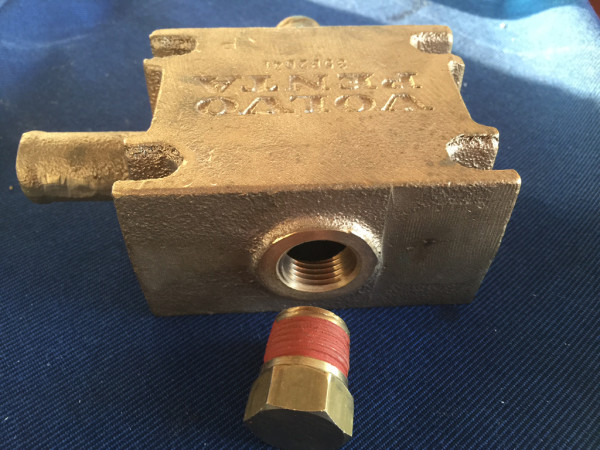


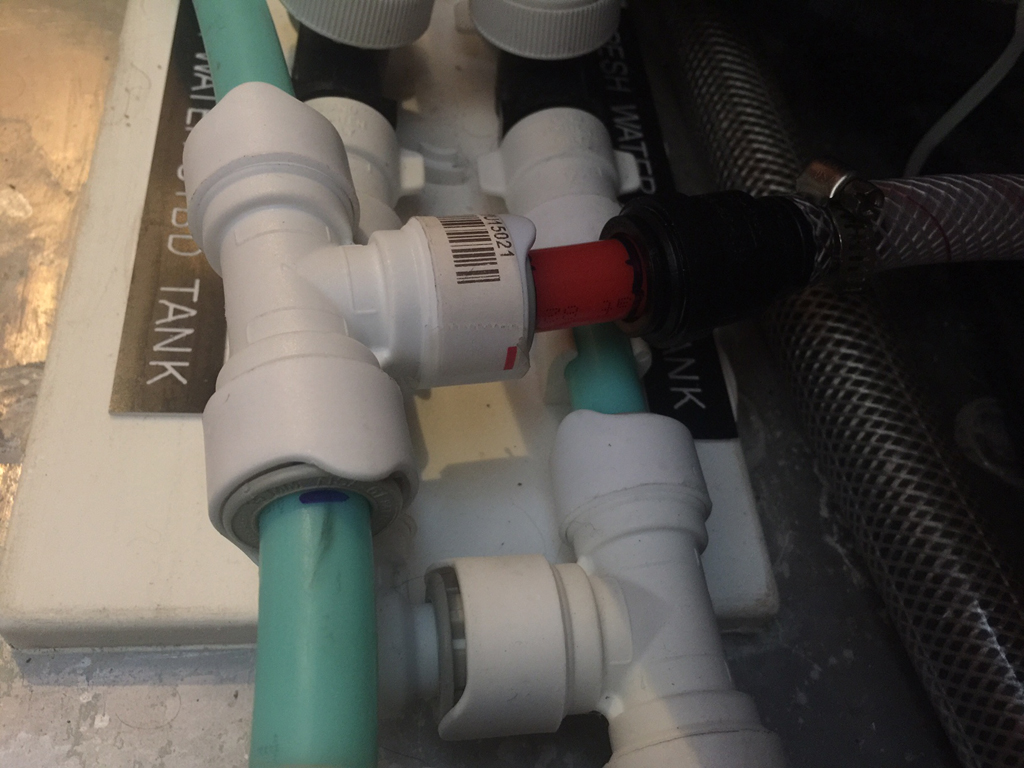
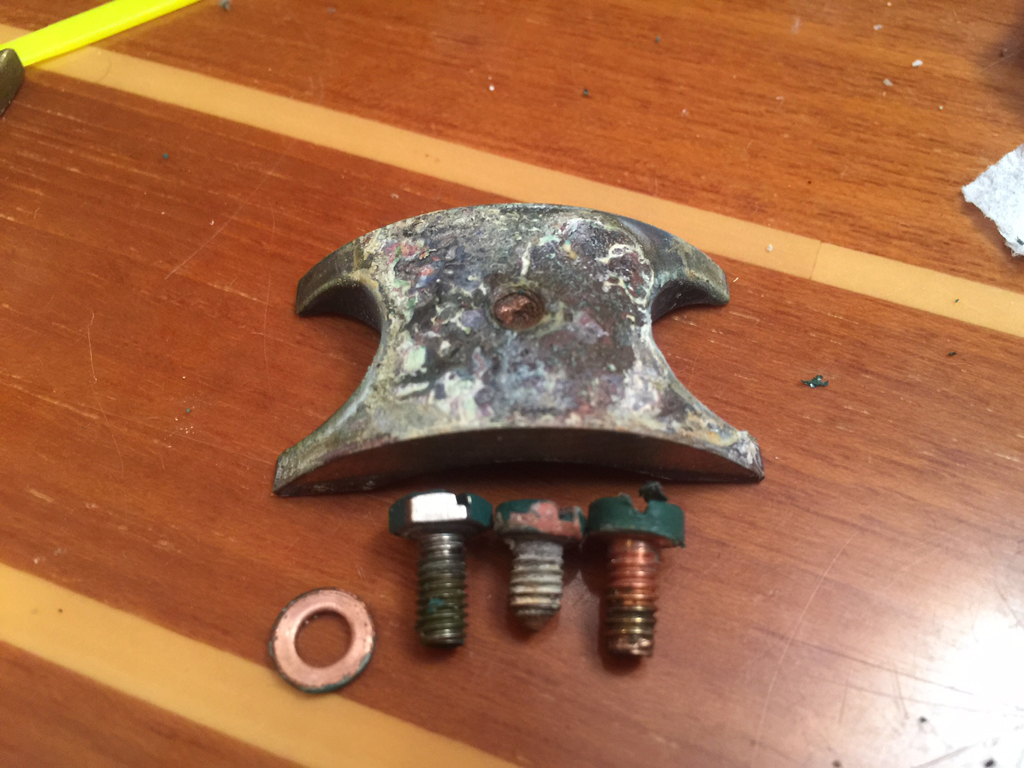
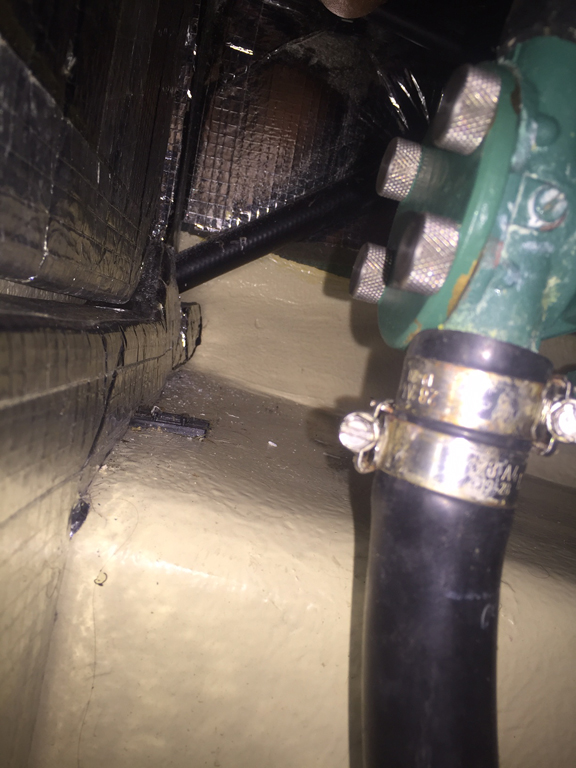
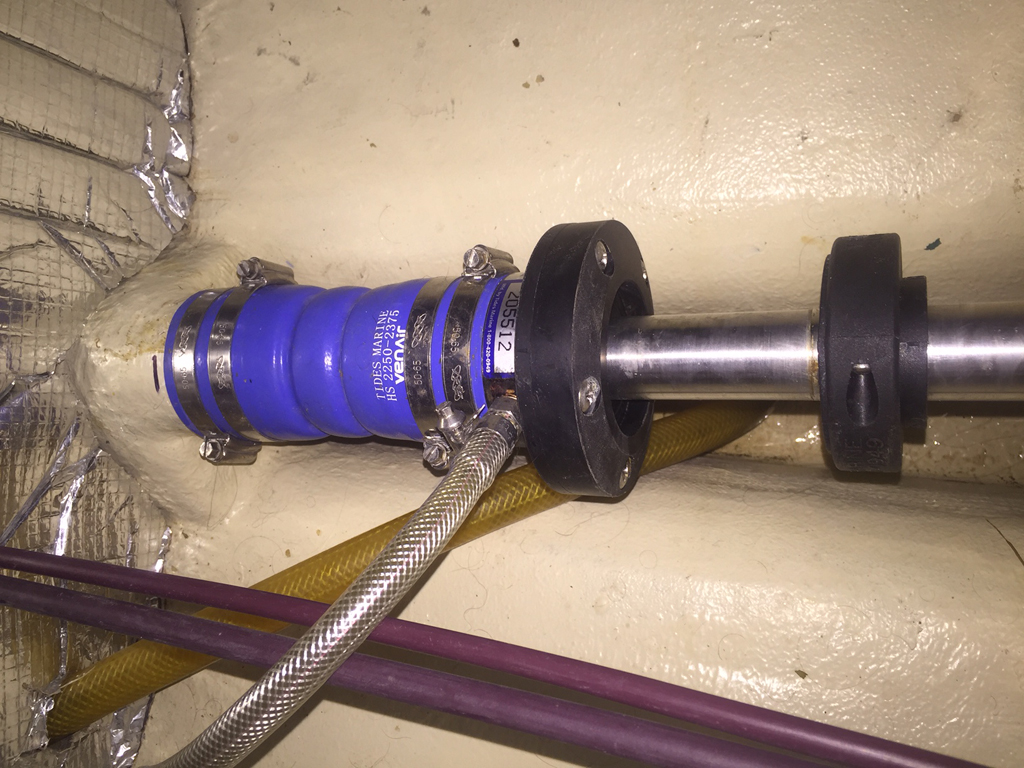
Comments are closed.